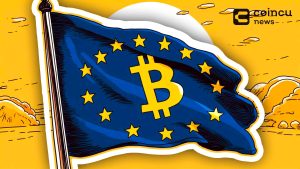A look back at Ripple’s litigation with the SEC after a year of litigation
A year ago, Ripple CEO Brad Garlinghouse shocked the crypto community by announcing that the US Securities and Exchange Commission is suing the blockchain company and its top managers.
Brad Garlinghouse – CEO of Ripple
The SEC published the whole thing Letter of complaint on the same day claimed XRP was an unregistered security and Garlinghouse and co-founder Chris Larsen benefited more than $ 1.3 billion from the illicit sale.
Accordingly, the price of XRP collapsed 60% in just 2 days. In the days that followed, exchanges continuously announced the delisting of this token due to concerns about participation.
In January, Ripple declared the case, declaring the SEC to be “eccentric” to global regulators, arguing that there is no fundamental difference between XRP and cryptocurrencies that the agency does not hold for securities (Bitcoin and ETH).
The vibrant XRP community also joined the fight against the SEC, quickly gathering causes and joining the lawsuit cited by attorney John Deaton. Rumors of a conflict of interest in this case are circulating in the XRP Army. The SEC, in turn, accused the community of attacking the agency and its employees.
During the winding-up phase, under the supervision of Judge Sarah Netburn, both Ripple and the SEC achieved a number of key victories. In July, the court dismissed William Hinman, then director of the agency.
In a September interview, Garlinghouse said he would only address if there was regulatory clarity for XRP:
“As far as we can find a constructive way with the SEC, of course we want to find out. Even so, there is no comparison scenario unless there is absolute certainty about XRP to continue the case. ”
End of November, Ripple CEO to speak He hopes the case will be resolved by 2022.
The parties filed earlier this month General recommendations to postpone the deadline for changing information to January 19th.
2021 is Ripple’s strongest year despite complaints
In a variety of tweet, Garlinghouse announced that despite the ongoing legal battle, the company has managed to achieve its best year to date
“It is proud to say that this year is Ripple’s strongest year ever (XRP-based ODL accounts for 25% of the US dollar volume on RippleNet, txns ODL rose 25 times Q3 / 2020 and 130% QoQ) previously) “.
The CEO claims that the XRP-based On-Demand Liquidity (ODL) solution now accounts for a quarter of the volume in US dollars that the RippleNet network handles. ODL transactions have increased 25x since the third quarter of 2020.
Ripple has opened new ODL corridors in Japan and the United Arab Emirates. In addition, Bhutan and Palau have also partnered with a distributed ledger technology provider to help them adopt national digital currencies. In March, Ripple announced the launch of a private version of the XRP ledger designed specifically for central banks.
He believes the weakening of “maximumism” is a positive development for the industry that will allow more people to participate.
In the long Twitter thread, Garlinghouse again targeted the dreaded regulator and repeated the lawsuit as an attack on the entire crypto industry.
Ripple’s CEO called SEC chairman Gary Gensler personally because he refused to comment on the status of ETH. Garlinghouse calls for a level playing field again after claiming the second largest cryptocurrency could overtake XRP thanks to regulatory clarity:
“Actors in the industry should not be punished for demanding a consistent application of regulatory clarity with a level playing field.”
In mid-November, Ripple published its own regulatory framework for creating crypto regulatory sandboxes.
Join Bitcoin Magazine Telegram to keep track of news and comment on this article: https://t.me/coincunews
Follow the Youtube Channel | Subscribe to telegram channel | Follow the Facebook page





















